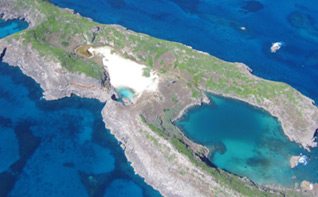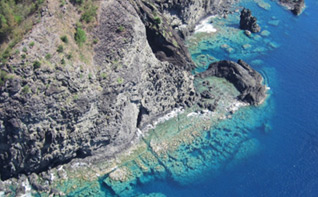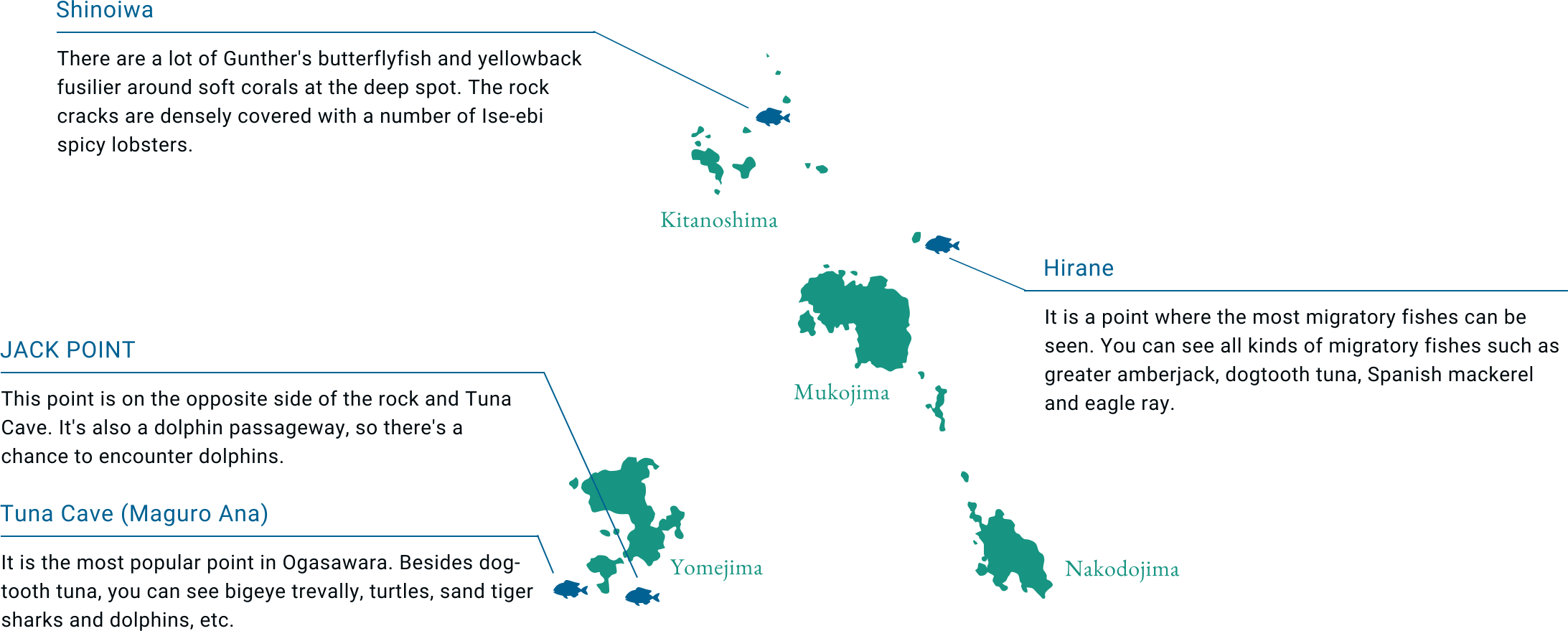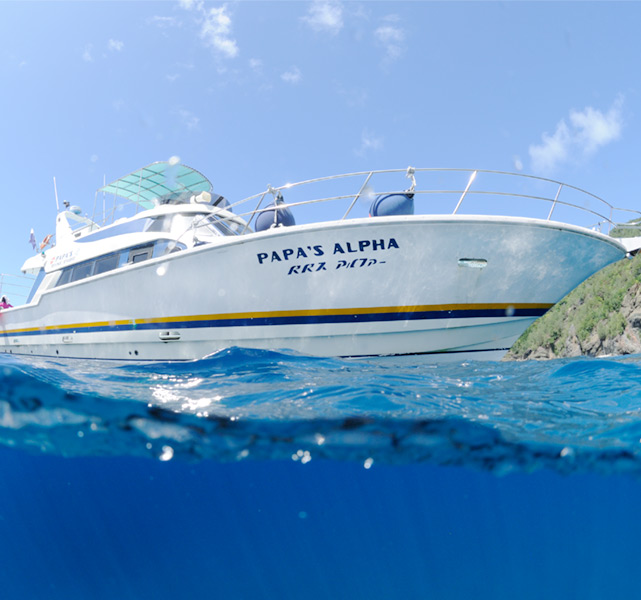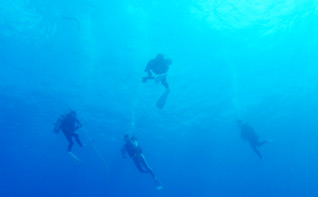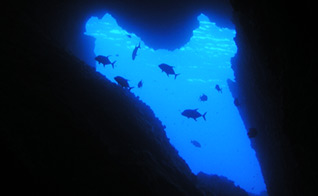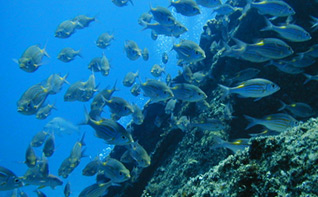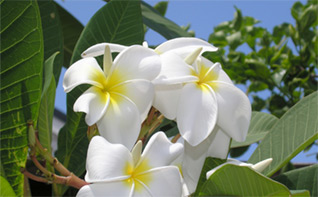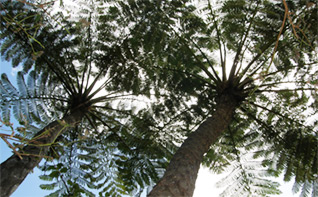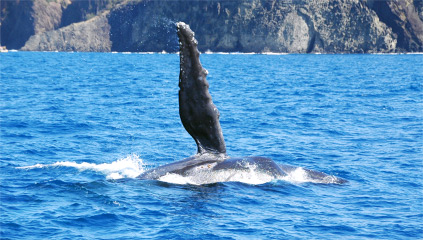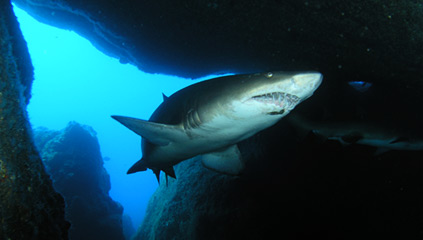Diving Area
Diving area is loosely divided into three: around Chichijima Island, Hahajima Island and Kater Island.
The diving points around Chichijima Island (including Anijima Island) are within thirty or forty minutes at furthest by boat. There are more than fifty various points such as splendid points including dropoff and large migratory fish and calm points of beautiful sands and abundant corals, here and there in this area. Also, there is a number of shipwrecks sunk during the war, and this is only area for genuine wreck diving in Japan.
Kater Island is located about fifty kilometers north of Chichijima Island, and it takes more than two hours by boat. Therefore, it cannot be reached in any season other than summer with the wind dying down. It is one of the world’s most superb diving areas and the Ogasawara’s biggest diving points such as Tuna Cave of Yomejima where more than 100 dogtooth tunas gather and JACK POINT where dolphin passageway are scattered about the area. In summer season, many divers come towards Kater Island.
If you wish to make a dive around Kater Island, please make sure to take a diving course around Chichijima Island beforehand and check you have enough weight adjustment and buoyancy skill, etc.



